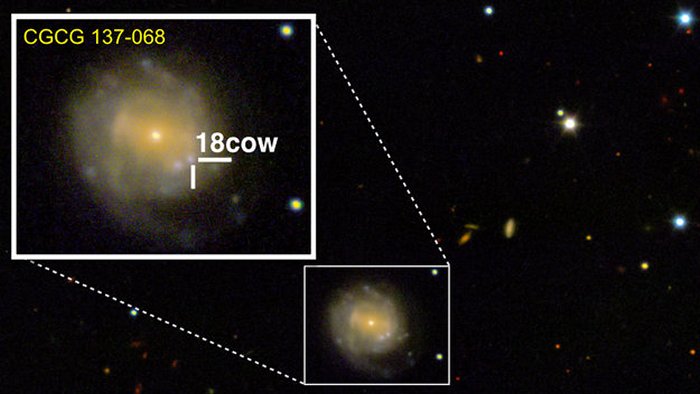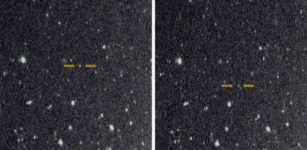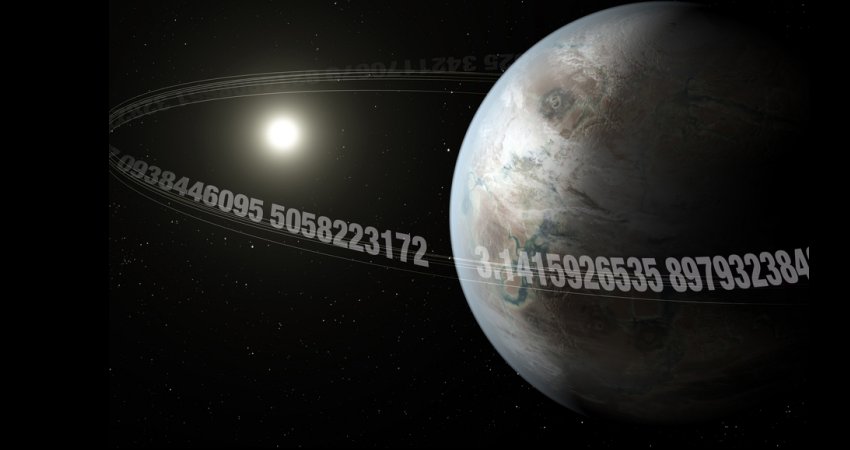‘The Cow’ – Object Spotted 200 Million Light Years Away In Hercules Constellation – Examined
MessageToEagle.com – A mysteriously bright, spectacular object burst in the northern sky last June by the ATLAS survey’s twin telescopes in Hawaii.
The object was spotted 200 million light years away in the Hercules constellation and dubbed AT2018cow or “The Cow.” The object quickly flared up, then vanished almost as quickly.
After combining several imaging sources, including hard X-rays and radiowaves, a Northwestern University-led international team of researchers say that that the telescopes captured the exact moment a star collapsed to form a compact object, such as a black hole or neutron star.

An image of supernova explosion AT2018cow and its host galaxy, CGCG 137-068, which is located some 200 million light years away. The image was obtained on 17 August 2018 using the DEep Imaging and Multi-Object Spectrograph (DEIMOS) on the W. M. Keck Observatory in Hawaii. The insert in the top left shows a zoom onto the galaxy, indicating the location of the supernova. Image credit: Copyright R. Margutti/W. M. Keck Observatory
“We think that ‘The Cow’ is the formation of an accreting black hole or neutron star,” Northwestern’s Raffaella Margutti, an assistant professor of physics, who led the research, said in a press release.
“We know from theory that black holes and neutron stars form when a star dies, but we’ve never seen them right after they are born. Never.”
After it was first spotted, The Cow captured immediate international interest and left astronomers scratching their heads.
“We thought it must be a supernova,” Margutti said. “But what we observed challenged our current notions of stellar death.”
For one, the anomaly was unnaturally bright — 10 to 100 times brighter than a typical supernova. It also flared up and disappeared much faster than other known star explosions, with particles flying at 30,000 kilometers per second (or 10 percent of the speed of light). Within just 16 days, the object had already emitted most of its power. In a universe where some phenomena last for millions and billions of years, two weeks amounts to the blink of an eye.
“We knew right away that this source went from inactive to peak luminosity within just a few days,” Margutti said. “That was enough to get everybody excited because it was so unusual and, by astronomical standards, it was very close by.”
In their study, researchers used the W.M. Keck Observatory in Hawaii and the MMT Observatory in Arizona, as well as remote access to the SoAR telescope in Chile.
They took a closer look at the object and examined its chemical composition, finding clear evidence of hydrogen and helium, which excluded models of compact objects merging — like those that produce gravitational waves.
MessageToEagle.com










